While the Eiffel Tower and Louvre naturally draw millions of visitors to Paris each year, the City of Light holds countless other remarkable spots that often slip under the tourist radar. From quiet neighborhood cafes to hidden gardens and lesser-known museums, Paris rewards those willing to venture beyond the main attractions.
Whether you’re planning your first trip or returning for another taste of Parisian life, here are 18 places worth visiting in this timeless city – from classic landmarks to local favorites where you can experience Paris like a true Parisian.
Eiffel Tower
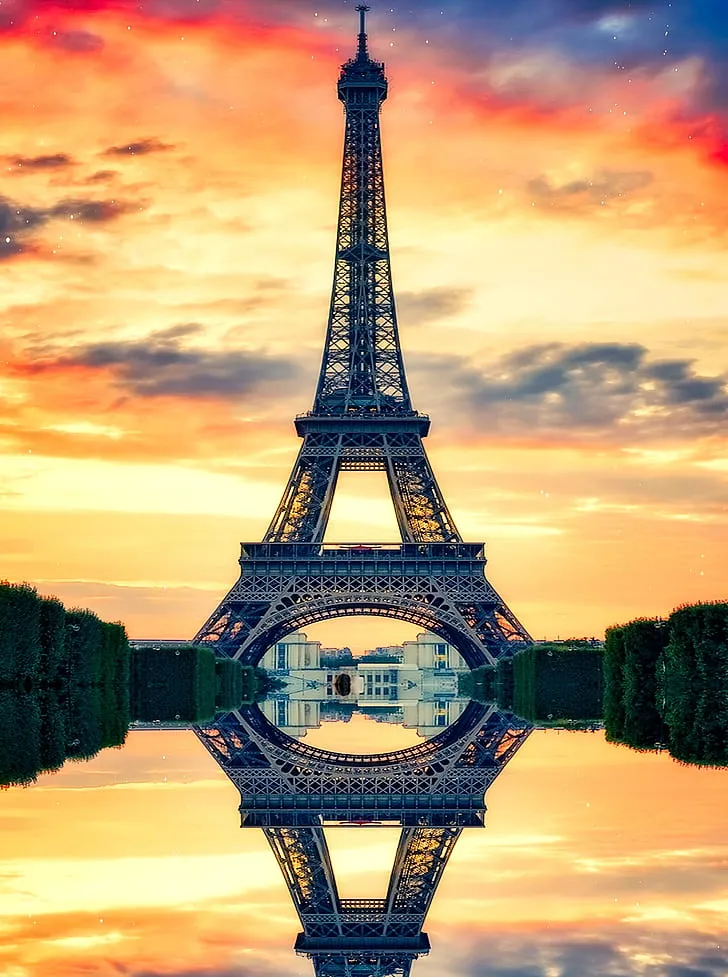
Every first-time visitor to Paris has the same thought when they catch their first glimpse of the Eiffel Tower rising above the city skyline – “Wow, it’s actually real.” This 984-foot iron lattice tower has been the city’s most recognizable landmark since 1889, drawing over 7 million visitors each year to its observation decks. The experience of riding the elevator to the top feels like traveling back in time to the age of innovation that created it, while the sweeping views of Paris from each level help you understand why this city earned its nickname as the City of Light. While the daytime crowds can be intense, visiting at sunset lets you watch the city transform as thousands of lights begin to twinkle across Paris, followed by the tower’s own spectacular light show that happens every hour after dark.
Louvre Museum
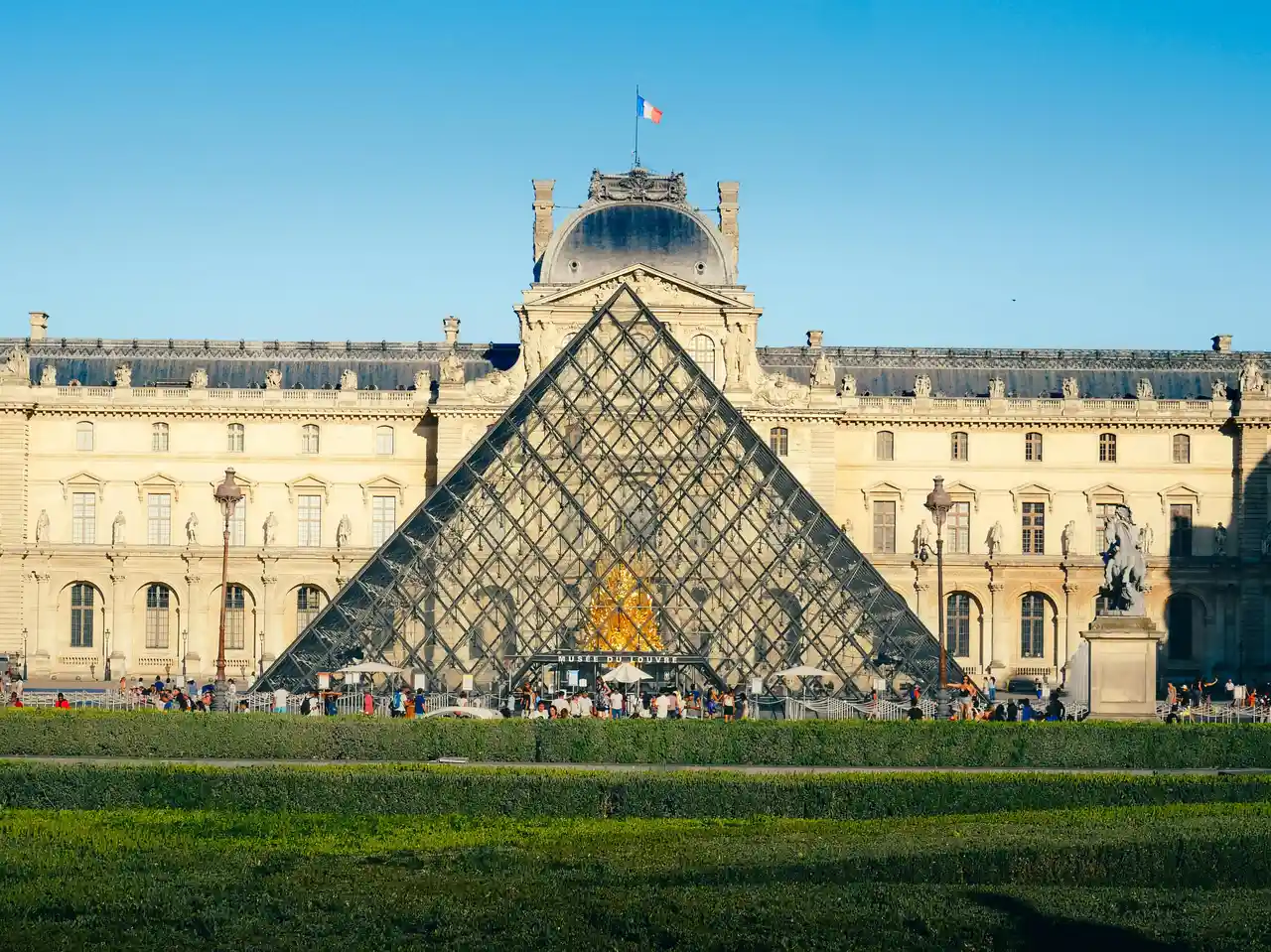
If you’ve never been to Paris before, you absolutely must visit the Louvre Museum. Located in the heart of the city, this world-famous museum houses over 380,000 pieces of art across its sprawling halls, including the iconic Mona Lisa painting. The glass pyramid entrance has become a symbol of Paris itself, while inside you’ll find treasures like the Venus de Milo statue and the Winged Victory of Samothrace among its vast collection spanning 8,000 years of human history.
Notre-Dame Cathedral
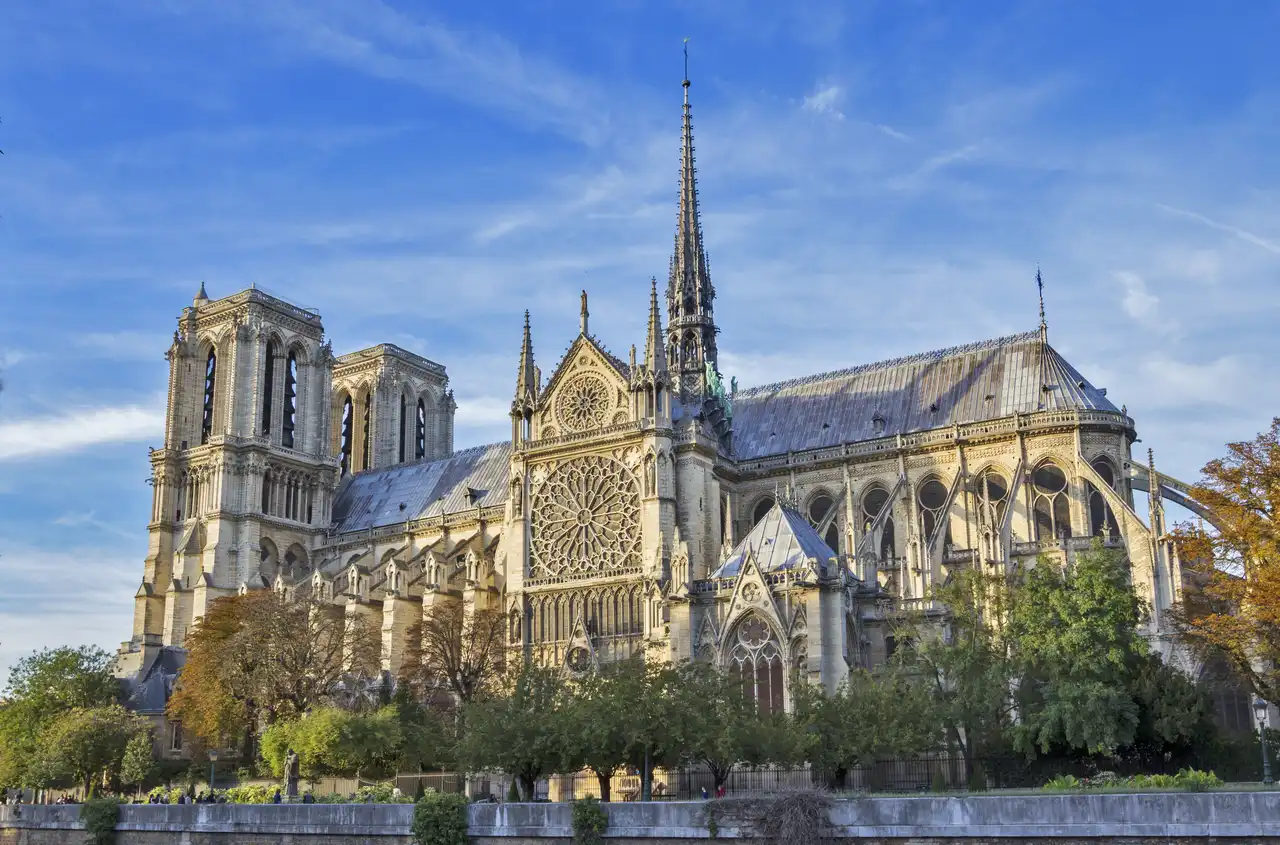
Of all the places I’ve visited in Paris, none represent the city’s spirit quite like Notre-Dame Cathedral. This 850-year-old Gothic masterpiece stands proudly on the Île de la Cité, drawing millions of visitors who come to see its legendary gargoyles, twin bell towers, and intricate rose windows. Even after the devastating fire in 2019, Notre-Dame remains a powerful symbol of Parisian resilience and architectural genius. While reconstruction work continues, visitors can still appreciate its imposing presence from the surrounding square, where the medieval builders first laid its foundation stones. It’s not just a religious monument – it’s a living piece of history that has watched over Paris through revolutions, wars, and centuries of change.
Arc de Triomphe
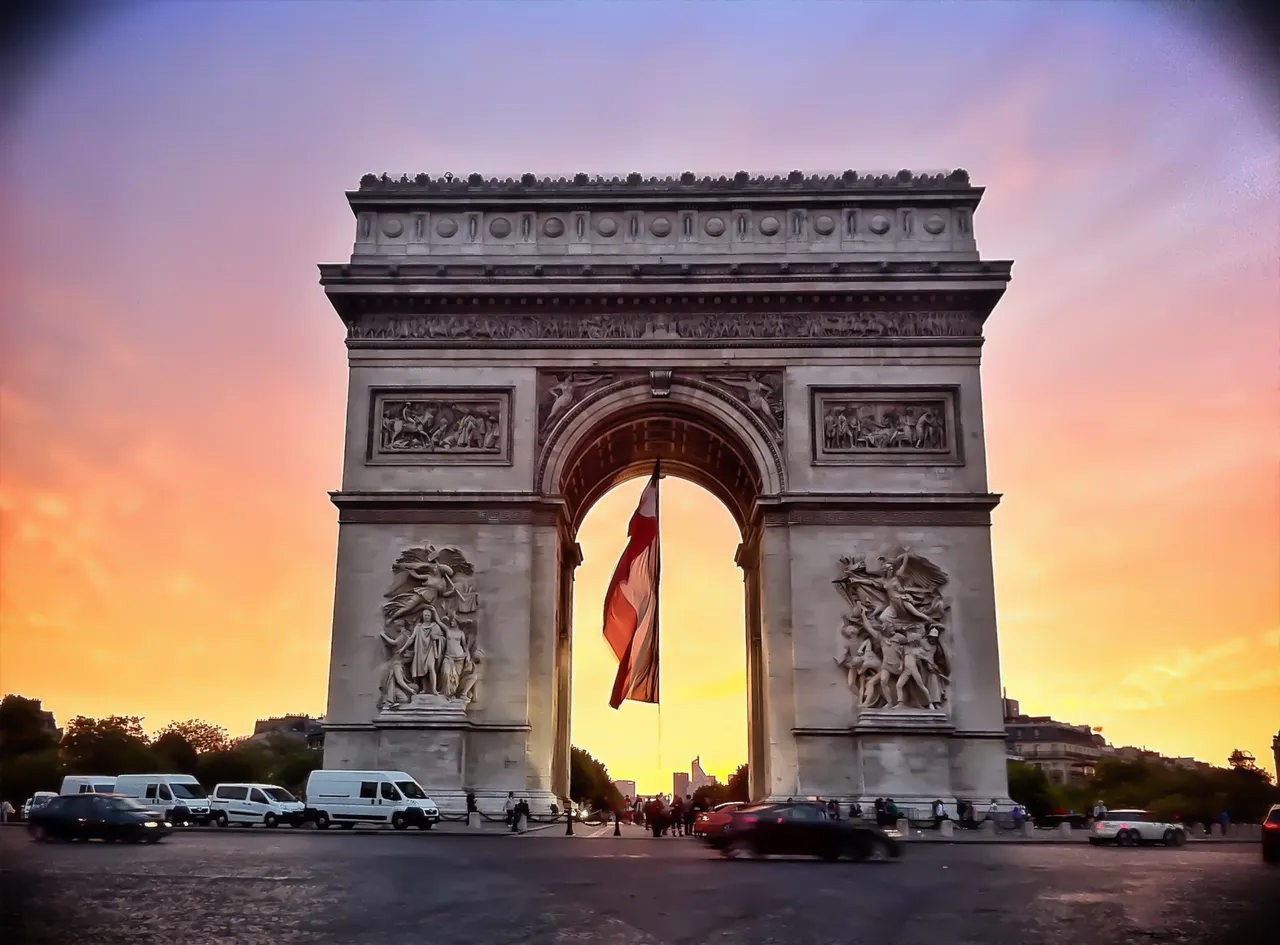
Stand at the center of Paris when you visit the iconic Arc de Triomphe, one of the city’s most famous monuments. Located at the western end of the Champs-Élysées, this massive arch offers a unique perspective of the city from its rooftop viewing platform. For just a few euros, you can climb 284 steps to reach the top, where you’ll see 12 major avenues spreading out like a star. Visit at sunset to watch the city’s lights come alive, or come during the day to witness the daily ceremony at the Tomb of the Unknown Soldier beneath the arch. It’s the perfect spot to understand why Paris earned its nickname as the City of Light.
Palace of Versailles
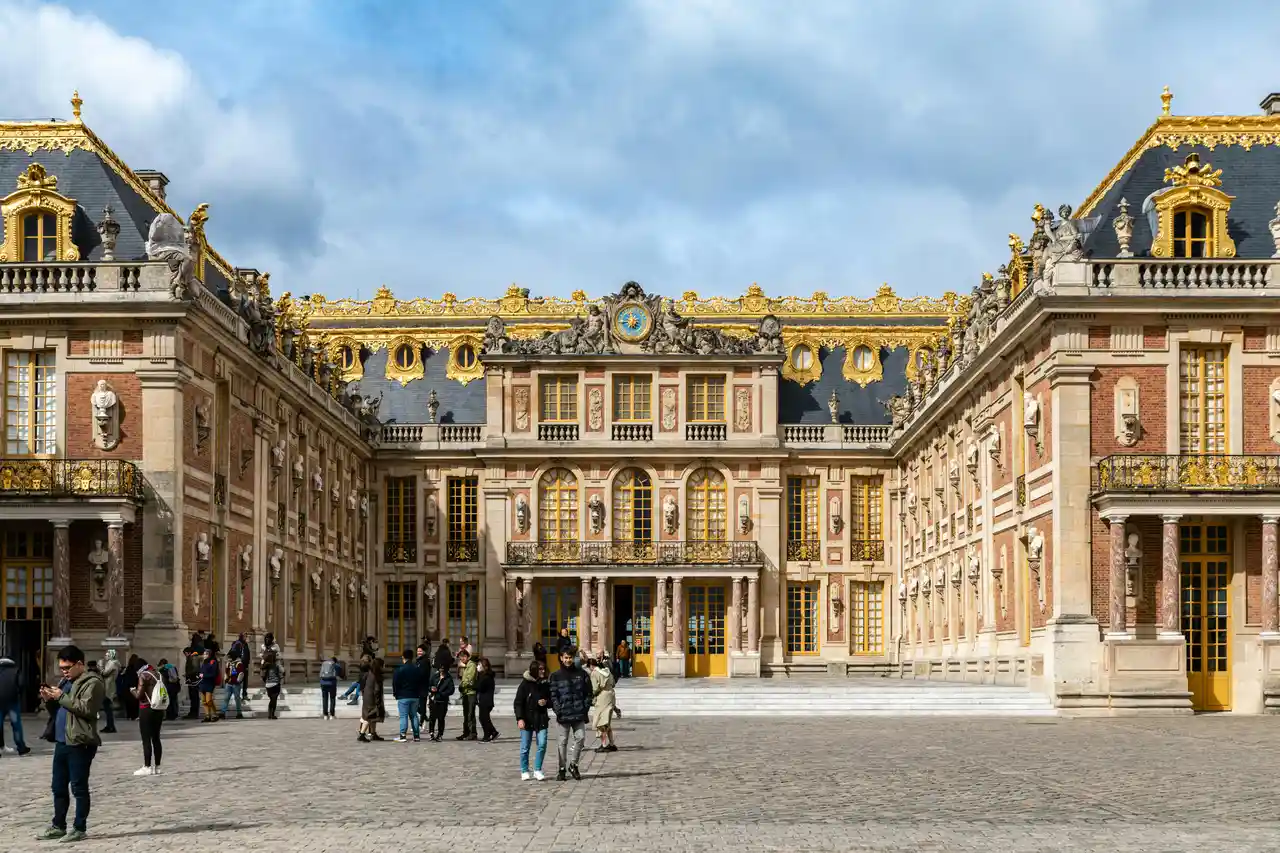
If there’s one place that perfectly captures the grandeur of French royalty, it’s the Palace of Versailles. Located just outside Paris, this massive estate was home to some of France’s most famous monarchs, including Louis XIV, the “Sun King.” The palace spreads across 2,000 acres of precisely manicured gardens, fountains, and buildings that showcase French architecture at its finest. You can spend hours exploring the Hall of Mirrors, where treaties were signed and royal celebrations were held, or wandering through Marie Antoinette’s private chambers. While the crowds can be overwhelming, especially in summer, visiting early in the morning lets you experience the palace’s quiet magnificence before the tour buses arrive.
Sacré-Cœur Basilica
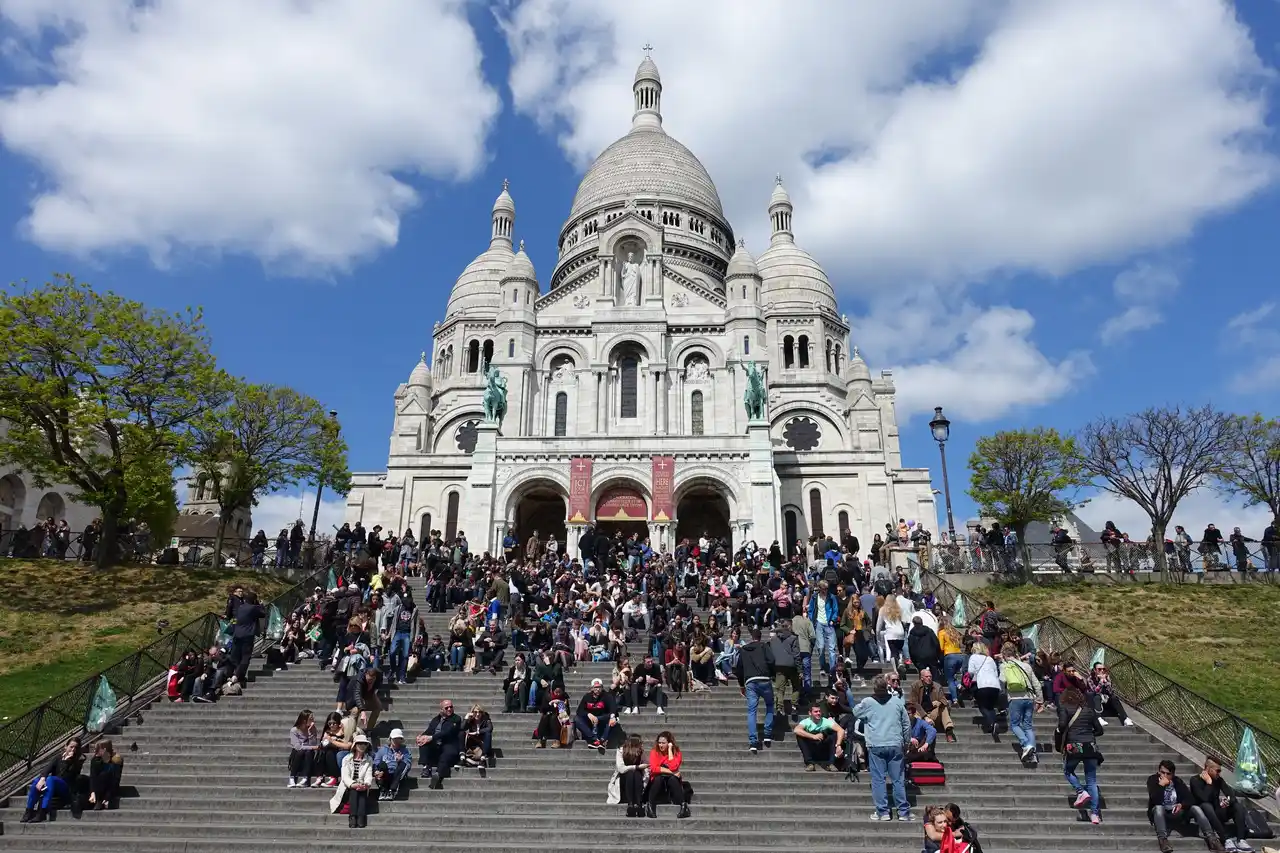
Perched atop the highest hill in Paris, the Sacré-Cœur Basilica has watched over the city since 1914. This white marble church sits in the artistic Montmartre neighborhood, where its Romano-Byzantine architecture stands out against the Parisian skyline. The interior holds one of the largest mosaics in France, with its ceiling decorated in gold leaf that catches the light streaming through tall windows. From the basilica’s steps, visitors get one of the best views of Paris – a sweeping panorama that stretches from the Eiffel Tower to Notre-Dame. Local musicians often gather here at sunset, adding their melodies to the peaceful atmosphere while tourists and Parisians alike spread out on the grass with wine and cheese picnics.
Musée d’Orsay
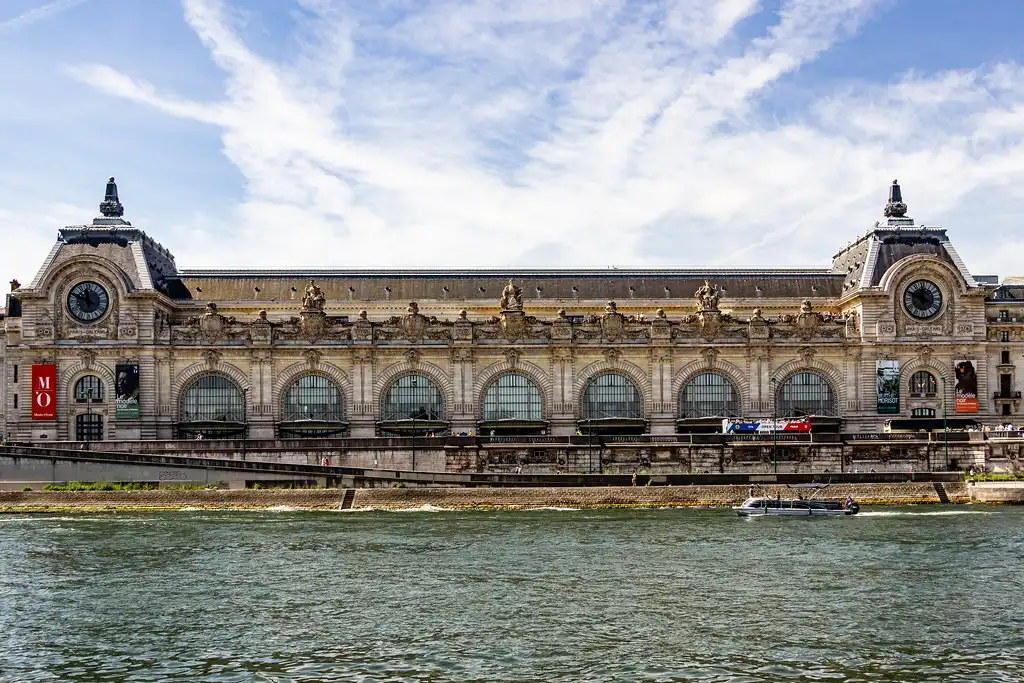
Ever wondered what it’s like to step into an old train station filled with masterpieces? That’s exactly what you’ll find at Musée d’Orsay, a former railway station turned art museum on the left bank of the Seine. Home to the world’s largest collection of Impressionist art, this is where you can get up close with Van Gogh’s self-portraits and Monet’s dreamy water lilies. The building itself, with its massive clock windows and ornate architecture, is just as impressive as the art it houses. You can spend hours wandering through the light-filled galleries, discovering works by Renoir, Degas, and Cézanne, before heading up to the rooftop terrace for one of the best views of Paris.
Luxembourg Gardens

Ever wished you could escape the busy streets of Paris for a peaceful afternoon? The Luxembourg Gardens feels like stepping into a royal hideaway, where 23 hectares of manicured lawns and tree-lined paths transport you to a different era. Created in 1612 for Queen Marie de Medici, this beloved park has become a favorite spot for both locals and visitors to relax, read, or watch children sail wooden boats on the central pond. You can wander past over 100 statues, admire the ornate Medici Fountain, or join Parisians for a game of chess under the chestnut trees. The gardens also house the French Senate in the Luxembourg Palace, making this more than just a park – it’s a living piece of French history where politics and leisure have mingled for centuries.
Champs-Élysées

Take a stroll down the Champs-Élysées, Paris’s most famous avenue that stretches from the Arc de Triomphe to Place de la Concorde. This wide, tree-lined boulevard is home to luxury boutiques, high-end restaurants, and iconic French cafes where you can people-watch while sipping espresso. Stop by the Louis Vuitton flagship store for some window shopping, or catch a show at one of the historic theaters. At night, the avenue comes alive with twinkling lights and busy sidewalk cafes, making it a perfect spot for an evening walk after dinner. If you’re visiting during Bastille Day or New Year’s Eve, this is where you’ll find the biggest celebrations in the city.
Place de la Concorde
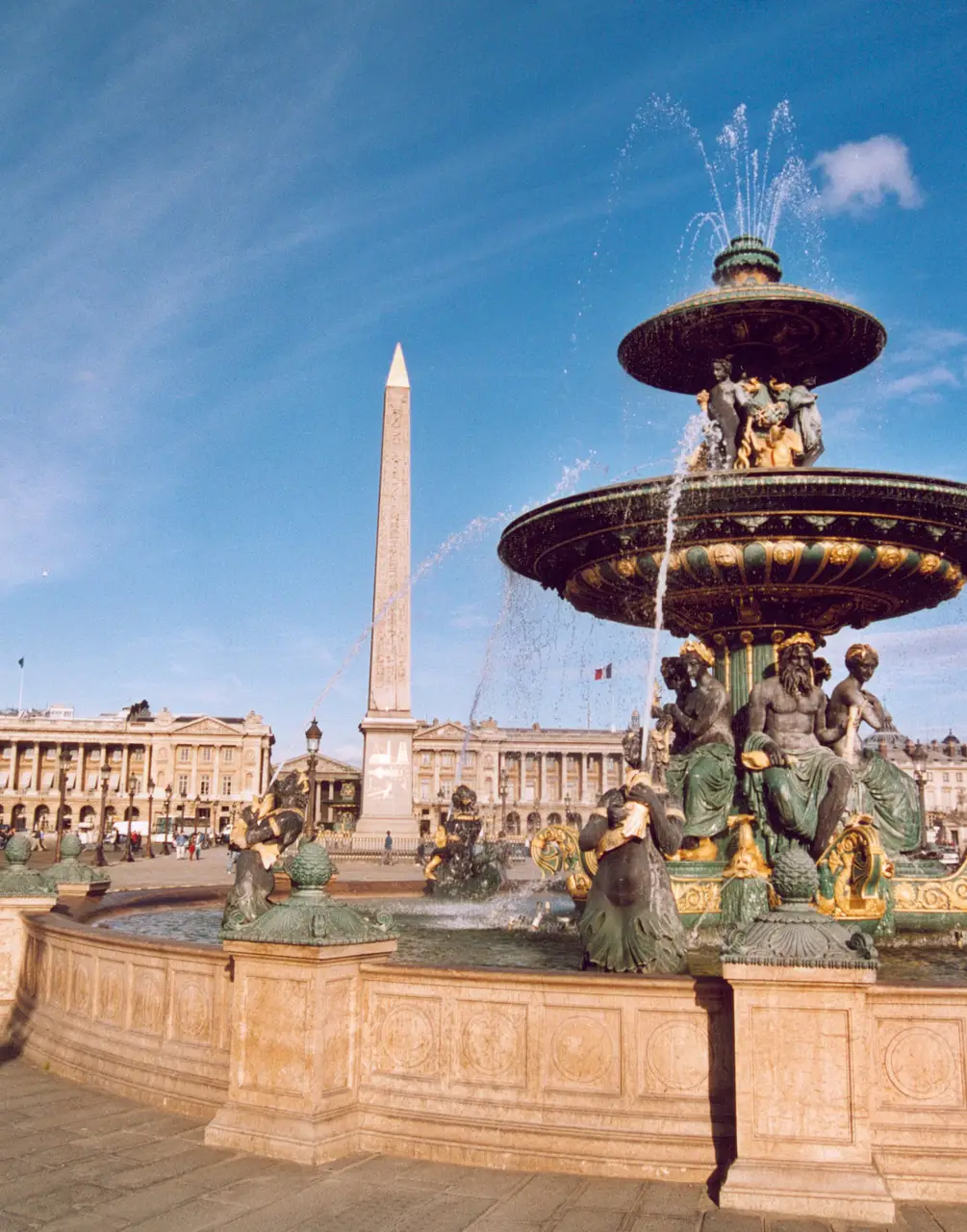
Have you ever stood at the center of French history? That’s exactly what you’ll experience at Place de la Concorde, Paris’s largest public square where the paths of royalty and revolution dramatically crossed. This vast plaza, where Louis XVI and Marie Antoinette met their fate during the French Revolution, now serves as a beautiful link between the Champs-Élysées and the Tuileries Garden. The Egyptian obelisk at its heart catches the golden Paris light, while eight statues representing French cities stand guard at the corners. Kids love racing around the splashing fountains, and photographers flock here at sunset when the square takes on a magical glow. It’s also where you’ll get some of the best views of the Eiffel Tower peeking out between the classical buildings.
Tuileries Garden
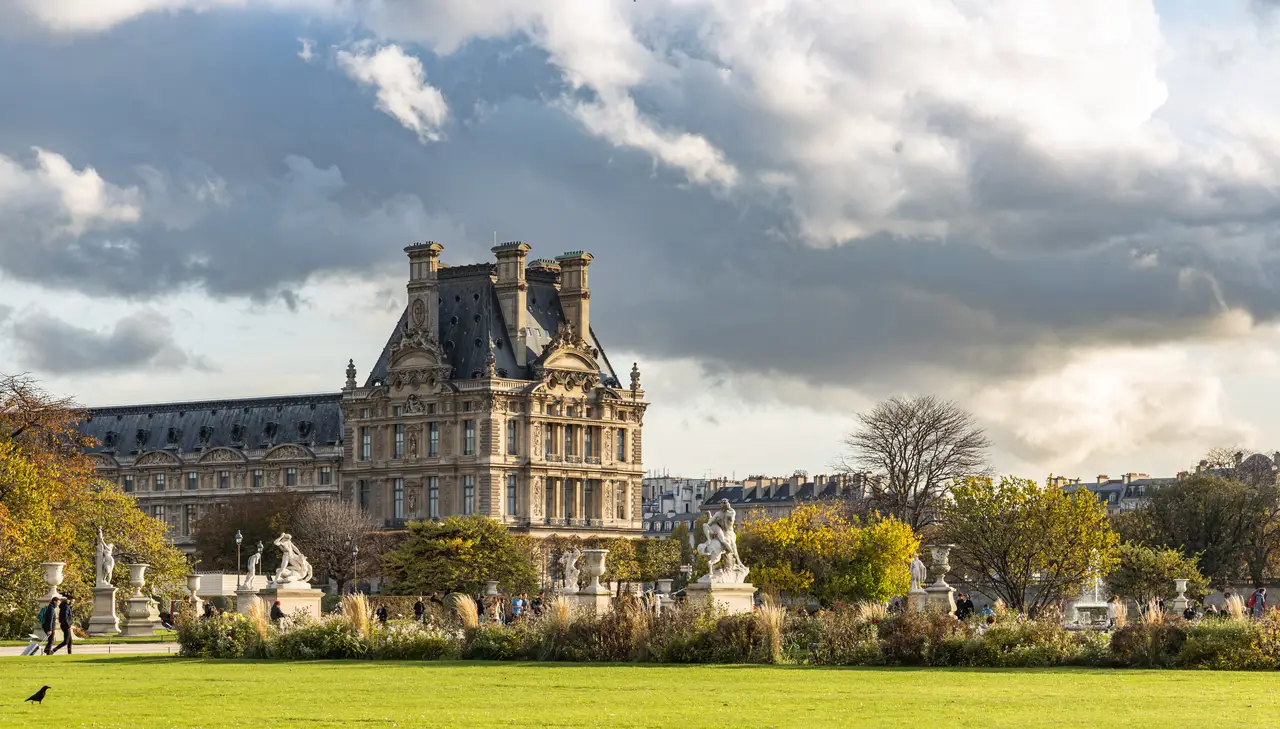
The Tuileries Garden draws both locals and tourists to the heart of Paris, offering a perfect blend of French formal gardens and outdoor relaxation between the Louvre Museum and Place de la Concorde. This 17th-century garden features neat rows of trees, sculptured lawns, and decorative pools where visitors can unwind in iconic green chairs or enjoy a picnic. During summer months, a festive carnival brings rides and games to the grounds, while year-round, the garden’s two museums – the Musée de l’Orangerie and Galerie nationale du Jeu de Paume – provide cultural experiences. Whether you’re looking to rest your feet after exploring the Louvre or simply want to people-watch in a historic Parisian setting, the Tuileries serves as an ideal spot to experience the city’s outdoor culture.
Centre Pompidou
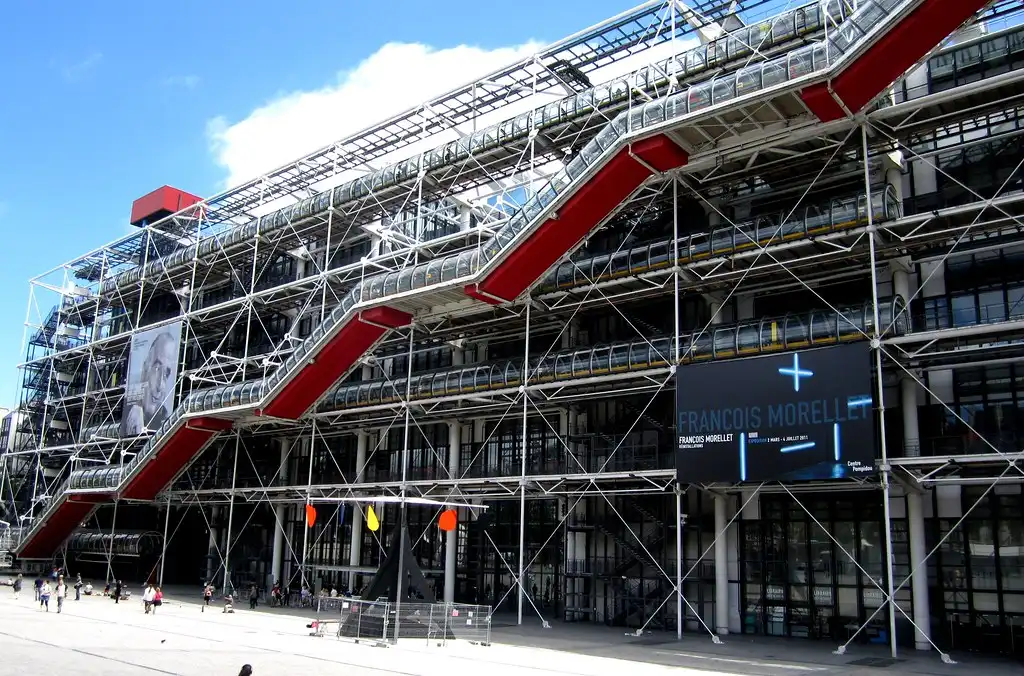
Step inside one of Paris’s most unique museums when you visit the Centre Pompidou, known for its eye-catching “inside-out” architecture with colorful pipes and tubes on its exterior. The modern art museum houses Europe’s largest collection of contemporary works, featuring pieces by Picasso, Kandinsky, and other famous artists across its six floors. For the best views of Paris, head up the transparent escalator to the rooftop, where you can enjoy panoramic views of the city while sipping coffee at Georges restaurant. It’s an ideal spot to take a break from museum-hopping and watch the sunset over the city’s rooftops.
Sainte-Chapelle
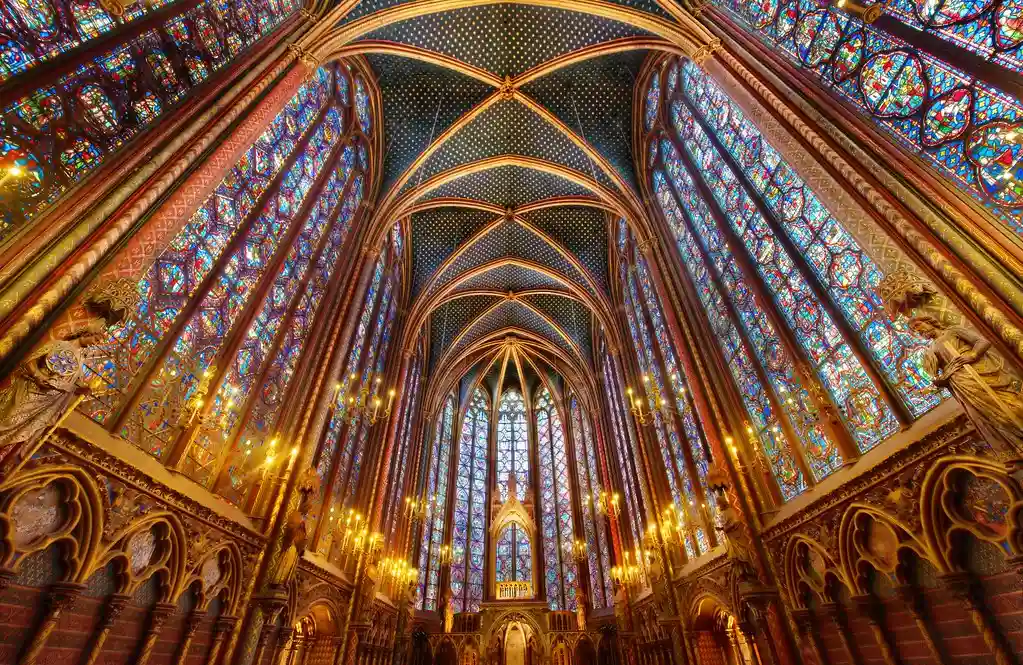
Located on the Île de la Cité in the heart of Paris, Sainte-Chapelle stands as one of the finest examples of Gothic architecture from the 13th century. Built in just seven years under King Louis IX, this royal chapel holds the world’s largest collection of original stained glass windows from the medieval period. The upper chapel’s 15 towering windows fill the space with rays of colored light, telling biblical stories through more than 1,100 scenes. The deep blues and reds of the glass create an almost otherworldly atmosphere as sunlight streams through, while the lower chapel’s more modest design offers a peaceful contrast with its star-painted ceiling. Visitors often time their trips for sunny afternoons when the light show is at its peak, though the chapel draws crowds year-round for its twice-weekly classical music concerts.
Panthéon

Step inside the Panthéon, where France’s most notable figures have found their final resting place in this grand neoclassical monument. Located in the Latin Quarter, this architectural masterpiece was originally built as a church but now serves as a mausoleum housing the remains of influential French citizens like Victor Hugo, Marie Curie, and Voltaire. Don’t miss Foucault’s Pendulum, an impressive scientific instrument that demonstrates the Earth’s rotation, hanging from the building’s central dome. For one of the best views of Paris, climb to the colonnade that wraps around the dome’s exterior – you’ll get a perfect photo of the Eiffel Tower framed by the city’s rooftops.
Les Catacombes

If you’re interested in exploring Paris’s darker side, you need to venture into Les Catacombes de Paris. Located 20 meters beneath the city streets, this underground network of tunnels houses the remains of more than six million former Parisians, arranged in intricate patterns along the limestone walls. The bones were moved here in the late 18th century when the city’s cemeteries became overcrowded, creating this unique and slightly eerie piece of Parisian history.
Palais Garnier

Many visitors come to the Palais Garnier for its famous opera performances, but this 19th-century masterpiece offers much more than just musical entertainment. The building stands as one of Paris’s most impressive examples of Second Empire architecture, with its grand marble staircase and elaborate ceiling painted by Marc Chagall in 1964. Both guided and self-guided tours let you explore the theater’s hidden corners, from the underground lake that inspired “Phantom of the Opera” to the ornate grand foyer with its crystal chandeliers. Even if you’re not an opera fan, the building’s rich history and architecture make it worth a visit, and the on-site restaurant, L’Opera, offers a perfect spot to take in the atmosphere while enjoying a meal.
Musée Rodin
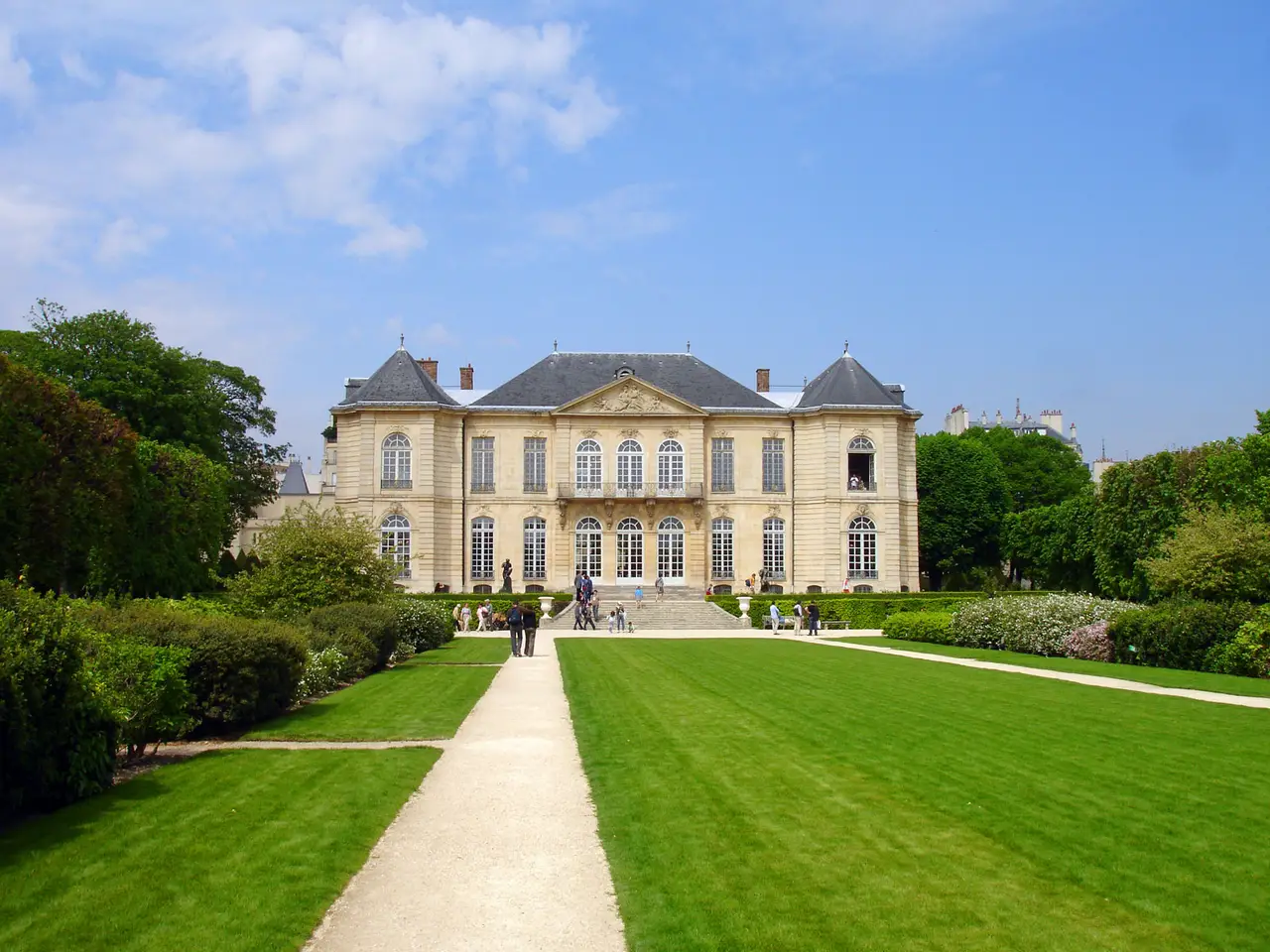
Art lovers flock to the Musée Rodin for its collection of works by French sculptor Auguste Rodin, but the museum offers much more than masterpieces in marble and bronze. Set in a beautiful 18th-century mansion with sprawling gardens, this museum lets visitors experience Rodin’s most famous works like “The Thinker” and “The Kiss” in both indoor and outdoor settings. The peaceful garden, dotted with sculptures and rose bushes, provides a welcome break from busy Paris streets, while the mansion itself houses not only Rodin’s pieces but also his personal art collection, including works by Van Gogh and Renoir. Whether you spend an hour wandering the gardens or a full afternoon exploring the mansion’s artistic treasures, the Musée Rodin offers a more intimate museum experience than its larger Parisian counterparts.
Place des Vosges
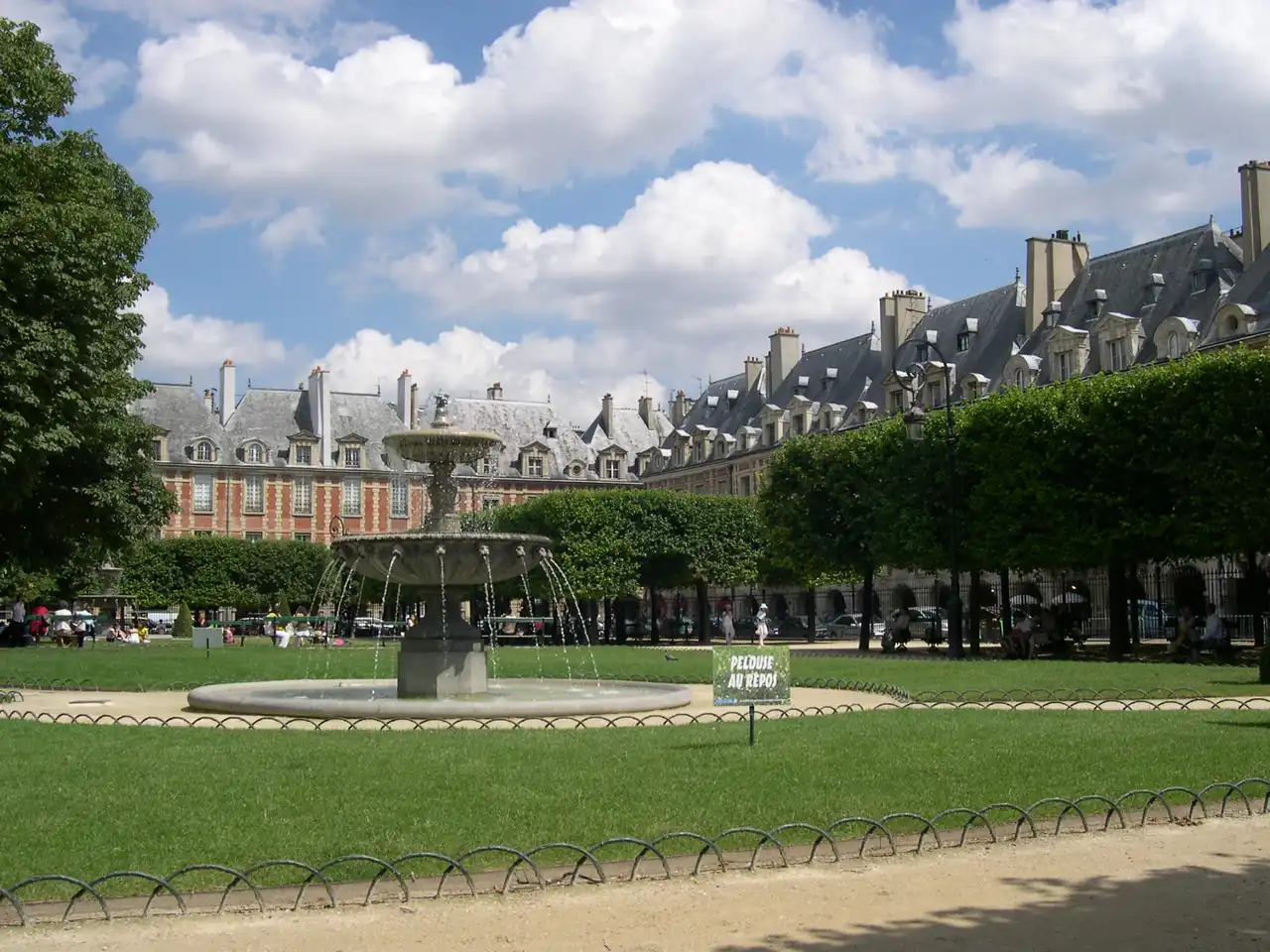
Located in the historic Marais district, Place des Vosges stands as Paris’s oldest planned square, dating back to the early 1600s. Unlike the city’s other grand spaces, this perfectly symmetrical square feels more like a peaceful neighborhood park, where locals and visitors alike gather to relax on the manicured lawns. The surrounding red-brick buildings, with their steep slate roofs and arched walkways, house art galleries, cafes, and the former home of writer Victor Hugo. On sunny afternoons, you’ll find Parisians picnicking under the lime trees or children playing around the central fountain, creating a scene that hasn’t changed much since the square’s royal beginnings.